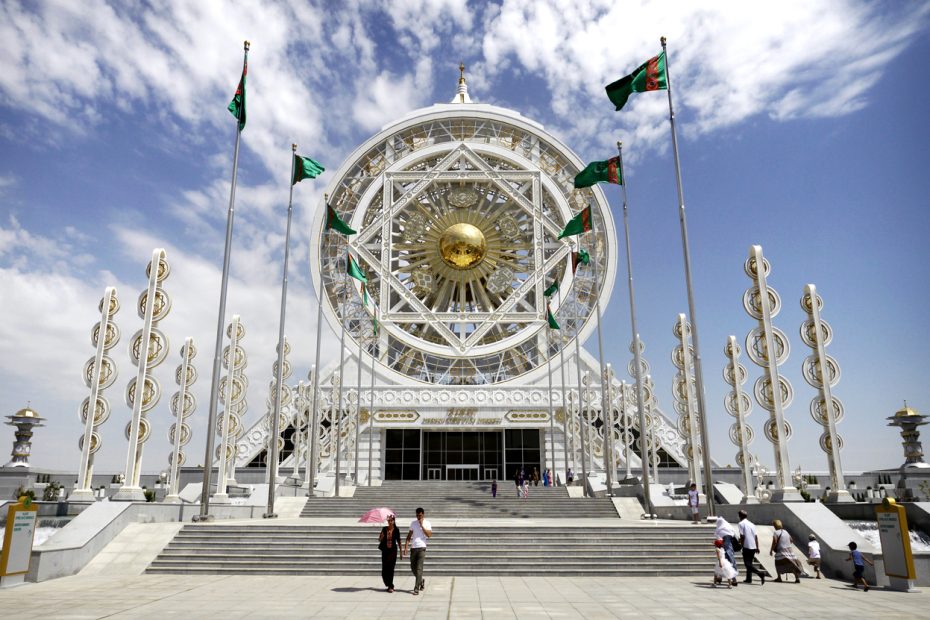Table of Contents
Introduction
Nestled between the Karakum Desert and Kopet Dag Mountains lies Ashgabat, the capital city of Turkmenistan. Known as the “City of White Marble”, Ashgabat is characterized by its extensive use of white marble in architecture and construction, giving the city a grandiose and futuristic aesthetic. But behind the gleaming facades lies a complex history and intriguing daily life.
History
Ashgabat was founded in 1881 as a Russian fort during the expansion of the Russian Empire into Central Asia. Situated along the Trans-Caspian railway, the settlement grew as a regional center of trade and transportation. In the early 20th century, amateur archaeologists uncovered evidence of prior civilizations like the Parthians, lending more history to the fledgling city.
Tragedy struck in October 1948 when a massive earthquake leveled the city, killing over 110,000 people. But Ashgabat was quickly rebuilt with Soviet planning, though many residents continued living in tents well into the 1950s.
Architecture
After Turkmenistan gained independence in 1991, there was a concerted effort to give Ashgabat a unique architectural identity. Marble became the preferred building material, rapidly escalating in the 2000s during an extensive reconstruction campaign.
Government ministries and monuments were adorned with marble facades, colossal statues, and gold flourishes. Extravagant vanity projects like the $90 million presidential palace broke records for being the most expensive administrative building in the world.
In 2013, Ashgabat entered the Guinness Book of World Records for having the highest concentration of white marble buildings anywhere on Earth. Critics argue the lavish construction is a waste of resources in a country still developing. But supporters believe it puts Turkmenistan on the map and embodies national pride.
Daily Life
Daily life in Ashgabat reflects the authoritarian rule and cult of personality revolving around the president. His portrait and pre-approved quotes adorn buildings across the capital as a constant reminder of who’s in charge. While the city dazzles from afar, closer inspection reveals poor infrastructure, food shortages, and curbs on free speech.
The government tries projecting an image of prosperity through events like the 2017 Asian Indoor and Martial Arts Games. In reality, the gap between rich and poor is massive. Living in Ashgabat requires following strict rules set by authorities, like reportedly not having beards or wearing makeup.
Despite the challenges, some citizens maintain hope for more reforms allowing freedom and human rights. There are glimmers of change under the new leadership of President Serdar Berdimuhamedov, who took over after the death of his father in 2022.
Tourism
As an isolated dictatorship for decades, Turkmenistan has only recently opened to tourism in a controlled fashion. Visitors to Ashgabat require an approved visa and must be accompanied by government guides.
Top attractions include the National Museum of History, Independence Square, and the Turkmenbashi Ruhy Mosque. Amusement parks offer surreal fun like the $50 million Ferris wheel or horse-shaped merry-go-round. While exploring the city, it helps having some knowledge of Russian since English is not widely spoken.
Beyond the marble veneer, genuine Turkmen hospitality can be found in places like the Teke Bazaar. Interacting with locals provides a better window into daily life. But with limited accommodations and restrictions, Ashgabat sees just a trickle of tourists currently.
Environmental Concerns
The extensive marble construction and landscaping come at a high environmental cost for Ashgabat. The city suffers from chronic water shortage due to its desert location. Meanwhile, air pollution from factories, unfiltered traffic exhaust, and accumulation of construction dust pose respiratory risks.
Excess waste generation also taxes the infrastructure. The marble buildings require frequent cleaning and maintenance. And the manicured parks and fountains consume copious water despite shortages. Critically needed investments in water conservation, clean energy, and recycling could help ease these problems.
Future Outlook
Ashgabat faces considerable economic challenges stemming from overreliance on natural gas exports. With hydrocarbon reserves expected to decline, the marble city may prove difficult to sustain without greater economic diversity. Much depends on the government enacting reforms.
As the extravagant vision of two presidents, some question whether Ashgabat will maintain its identity in the coming decades. But proponents argue the city could transition to a more open and livable capital while preserving its unique heritage.
Perhaps Ashgabat’s gleaming marble veneer will give way to reveal a more layered and enlightened society. With pragmatism and care, Ashgabat can glisten with sustainable prosperity beyond the dictators who shaped its skyline.
Conclusion
Ashgabat’s vast white marble architecture makes it a truly unique city. But understanding the context behind its lavish facade reveals a complex nation grappling with growth and change. While its future path remains uncertain, Ashgabat will likely continue inspiring awe as the singular “City of White Marble” nestled in the mountains of Central Asia.
FAQs
What country is Ashgabat located in?
Ashgabat is the capital and largest city of Turkmenistan, located in Central Asia.
How did Ashgabat get the nickname “City of White Marble”?
Ashgabat is nicknamed the “City of White Marble” because of the extensive use of white marble for government buildings, apartment blocks, monuments, and other construction throughout the city.
When did the marble construction boom in Ashgabat begin?
The marble building boom in Ashgabat largely began in the 2000s under the authoritarian rule of President Saparmurat Niyazov as the city underwent extensive reconstruction.
What are some of the most famous marble monuments in Ashgabat?
Some of the most famous marble monuments and buildings include the presidential palace, Ministry of Health building, Independence Monument, and Ruhy Mosque.
Does marble construction continue today in Ashgabat?
Yes, marble remains the preferred building material in Ashgabat, though the pace of new construction has slowed in recent years during economic stagnation.
